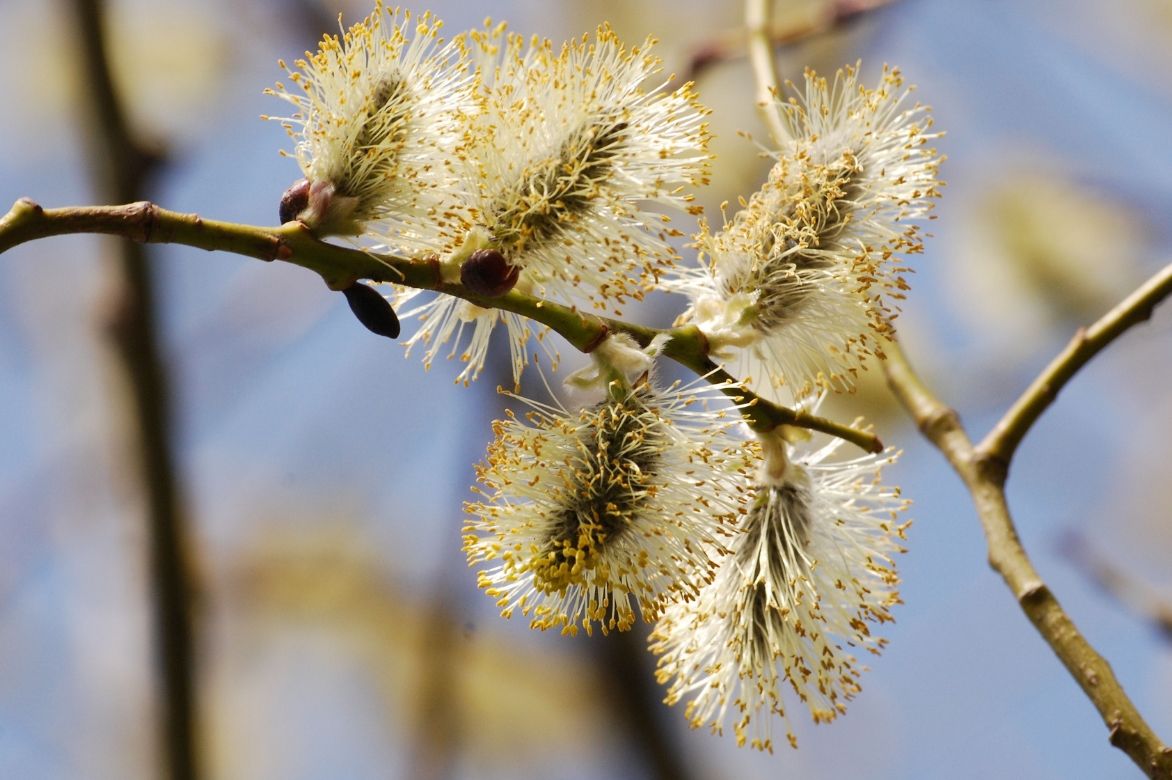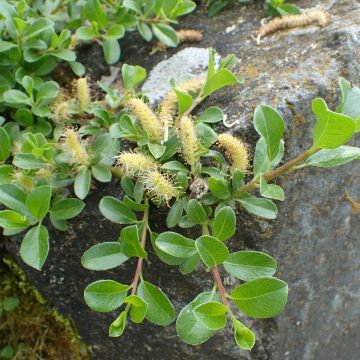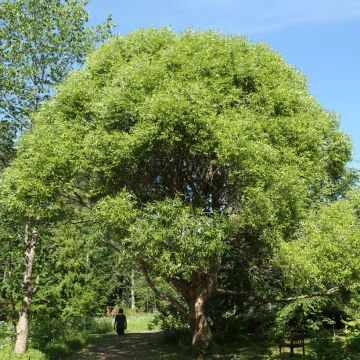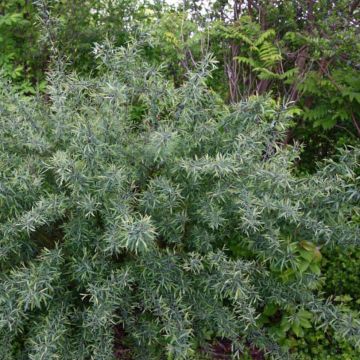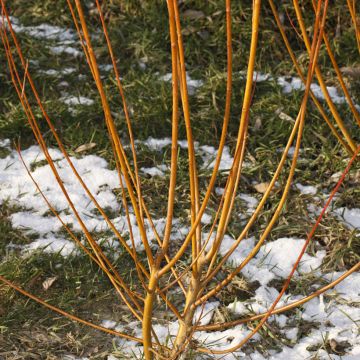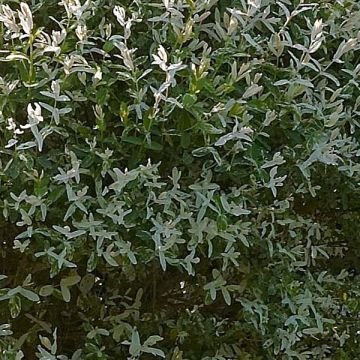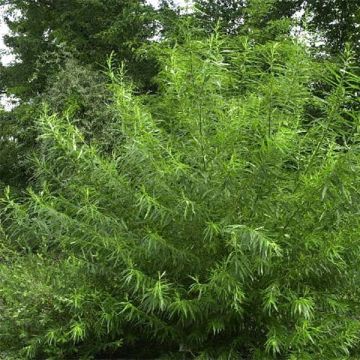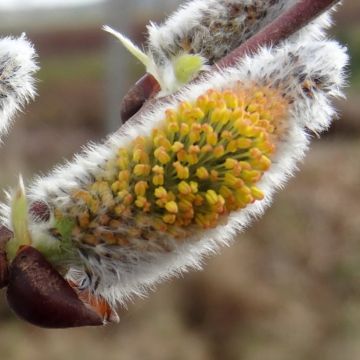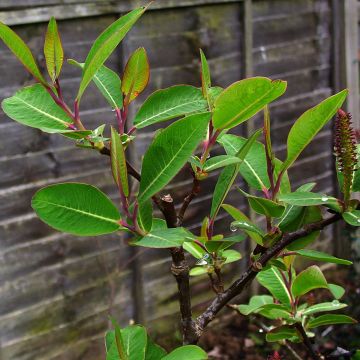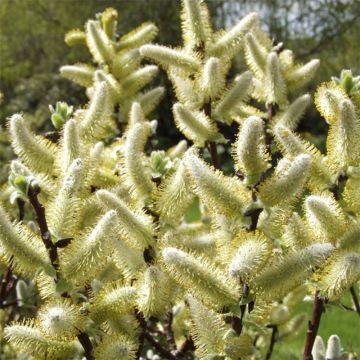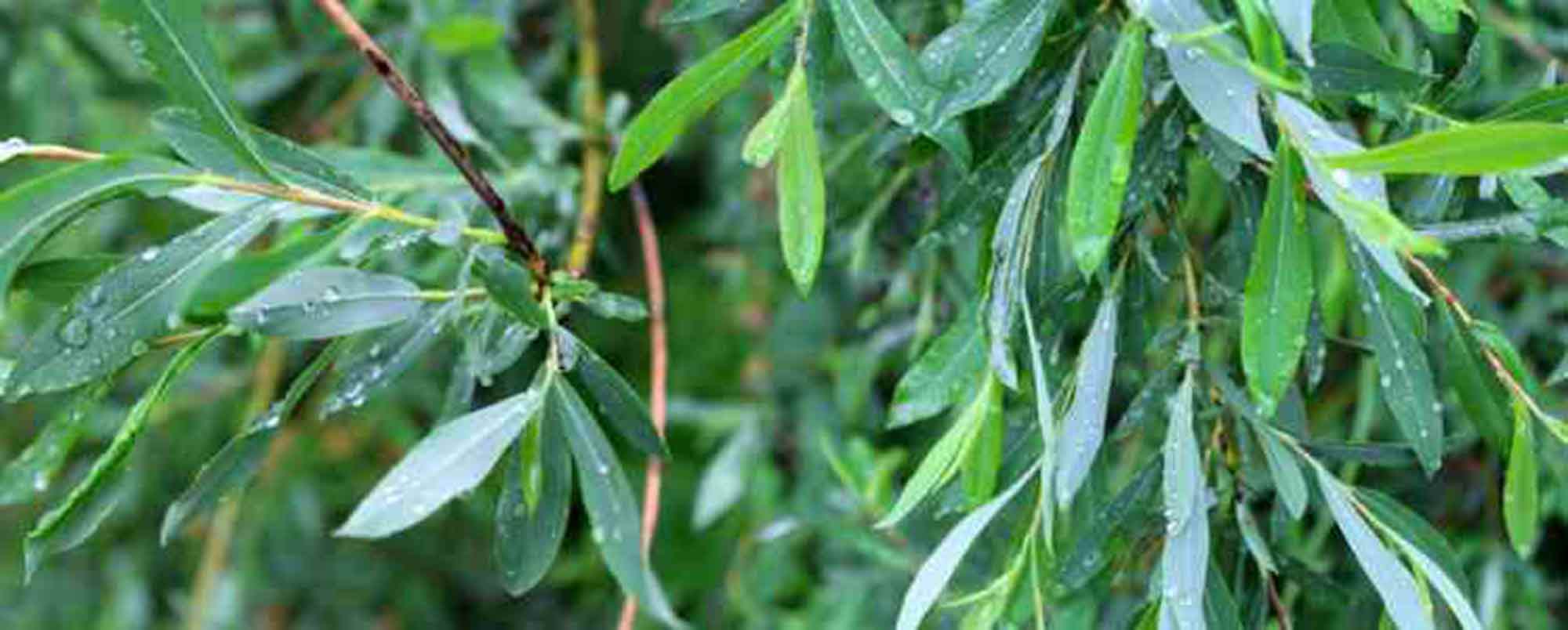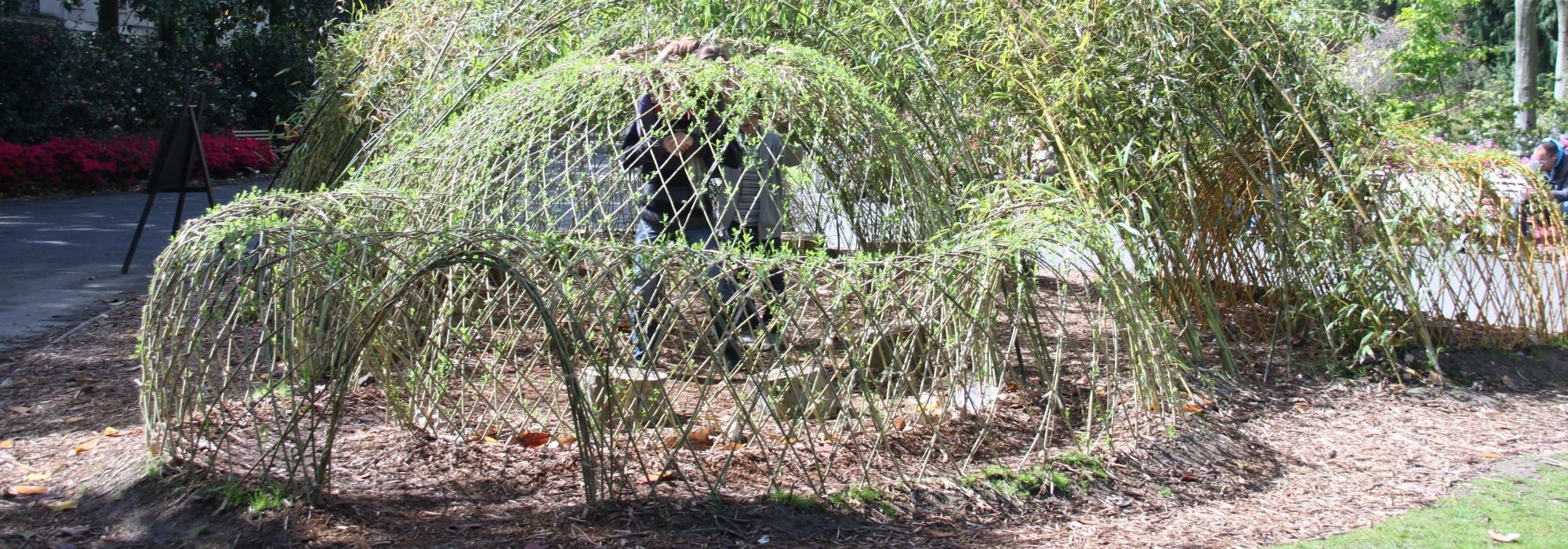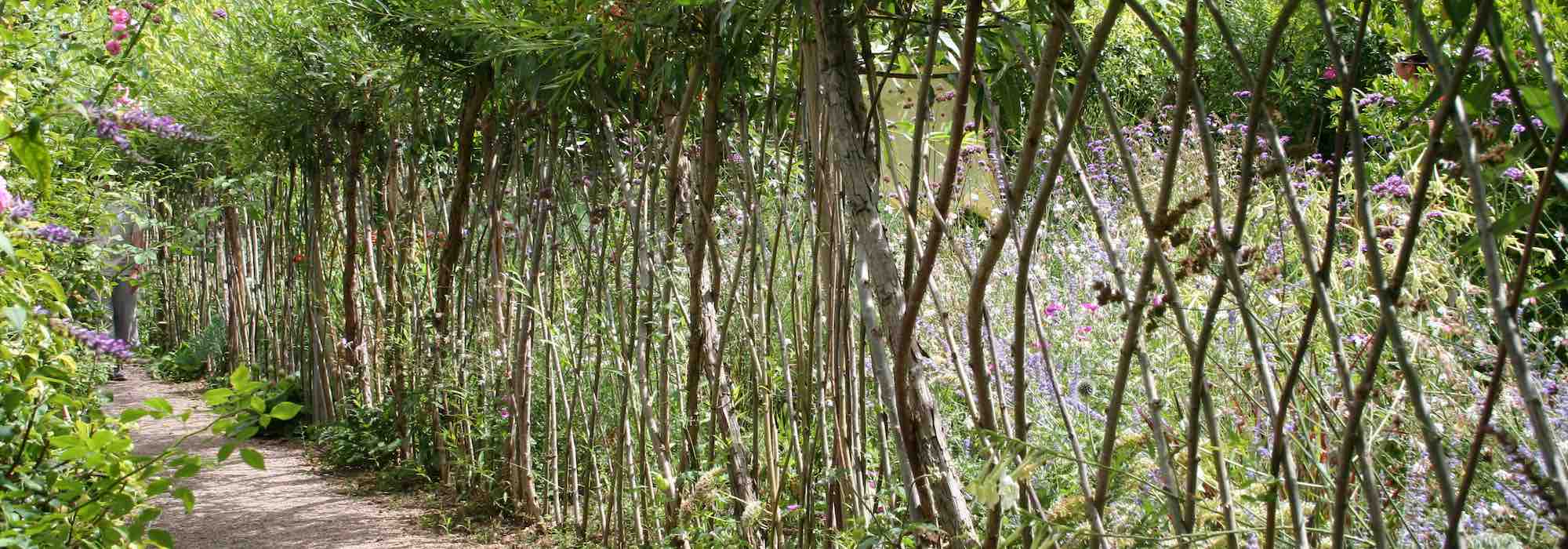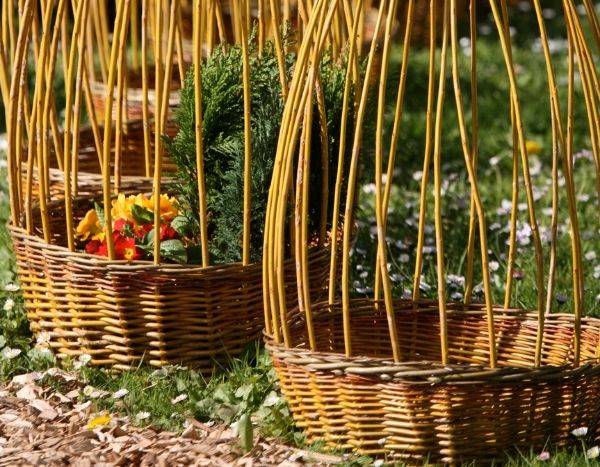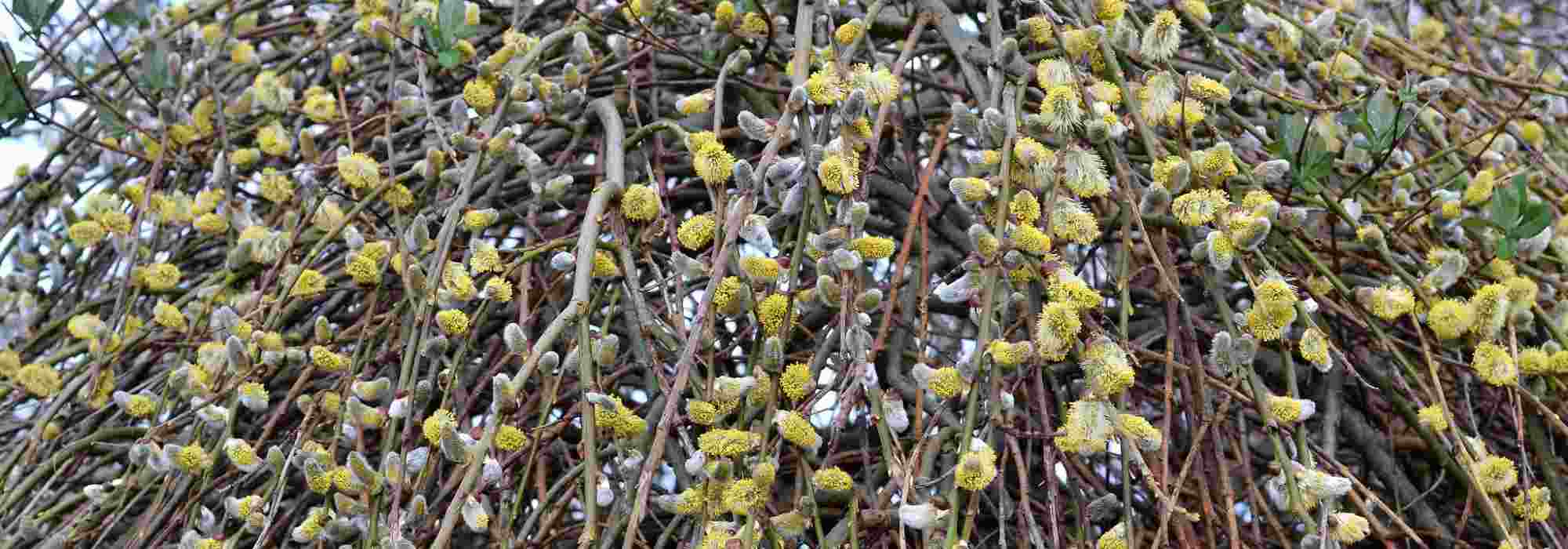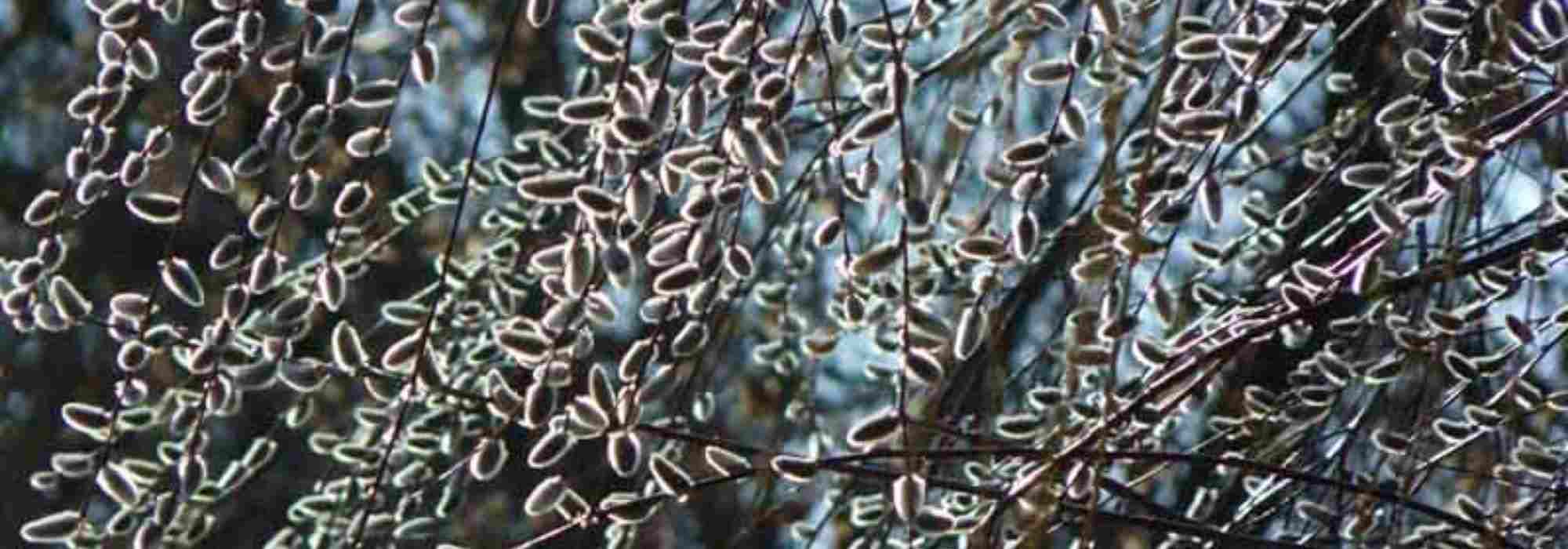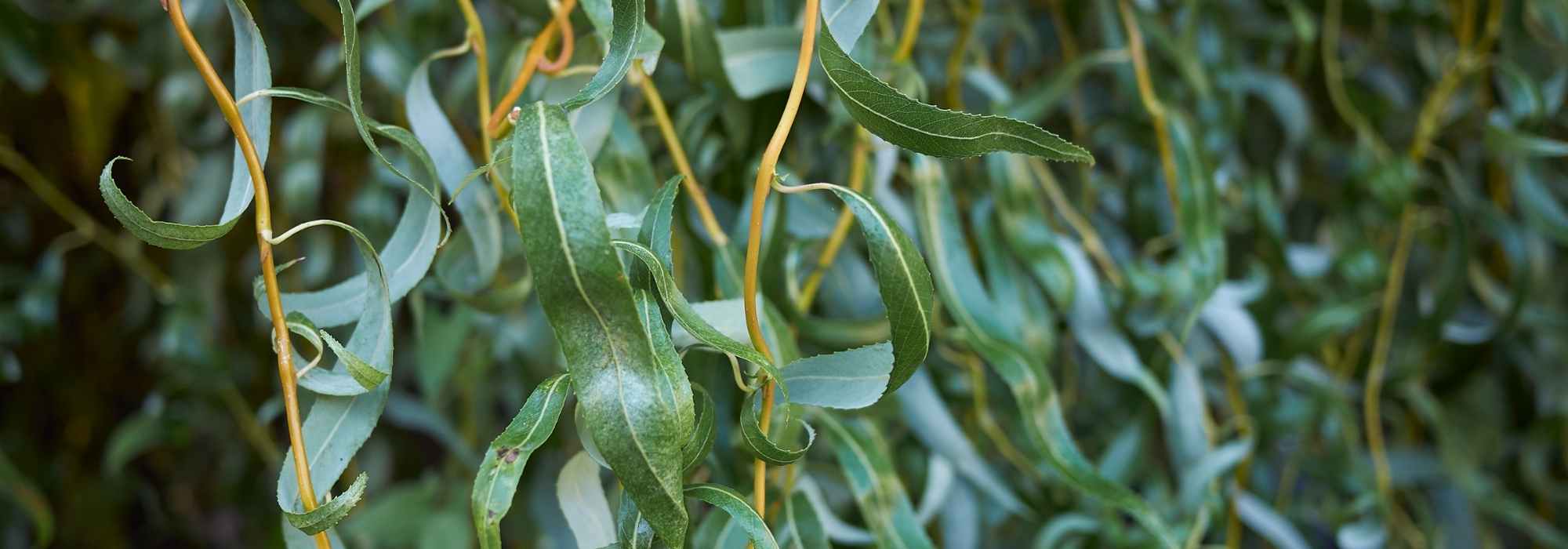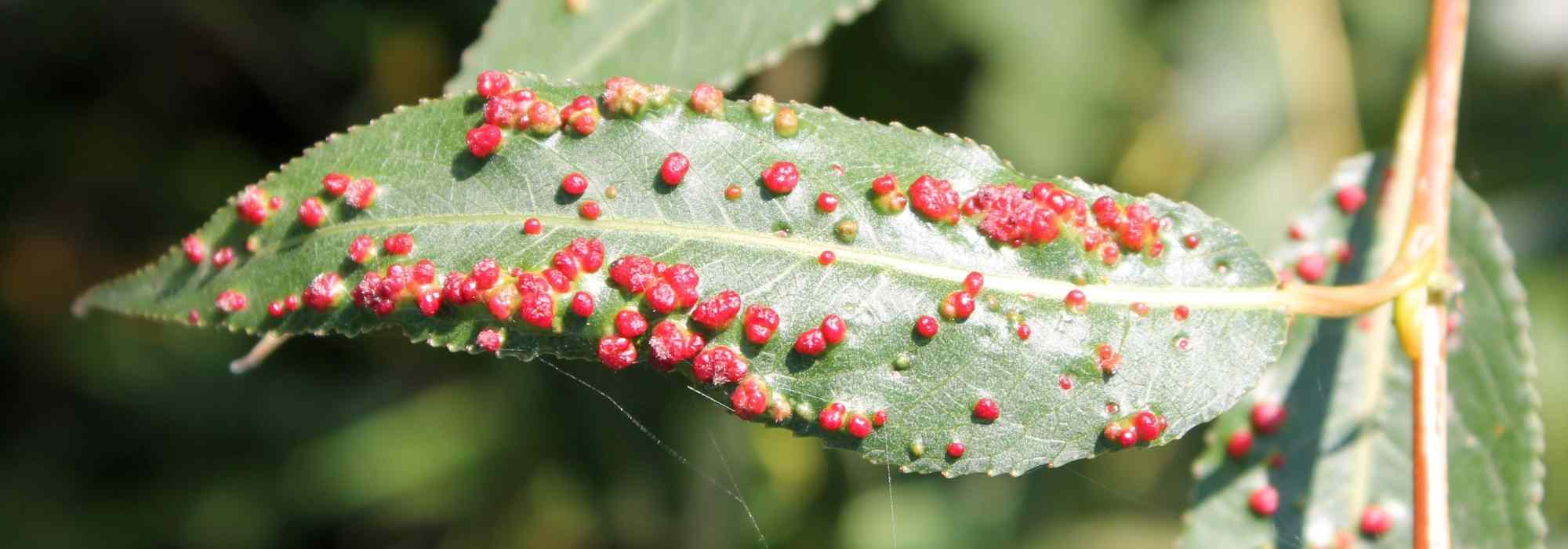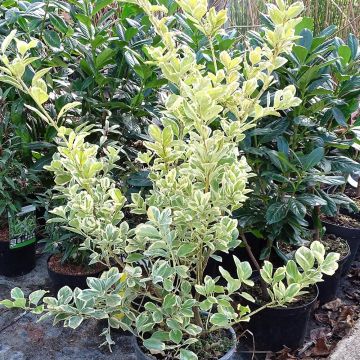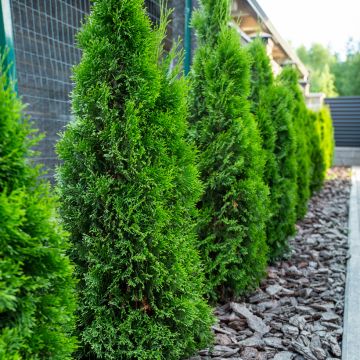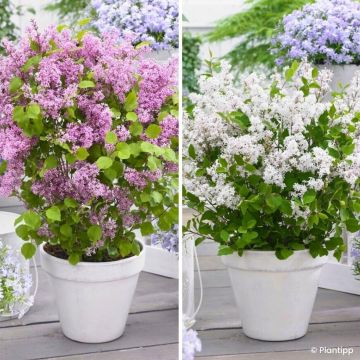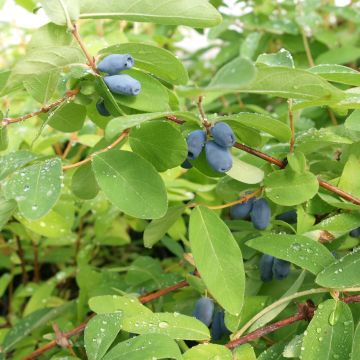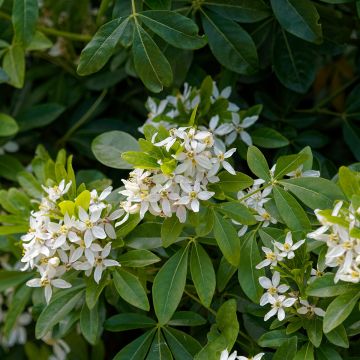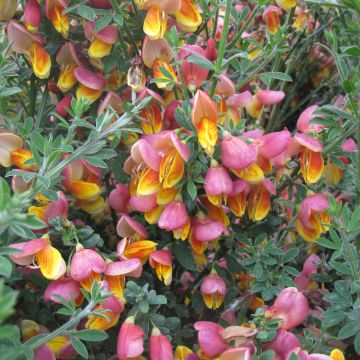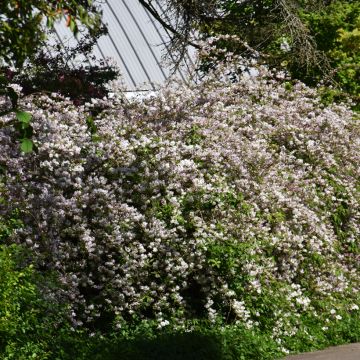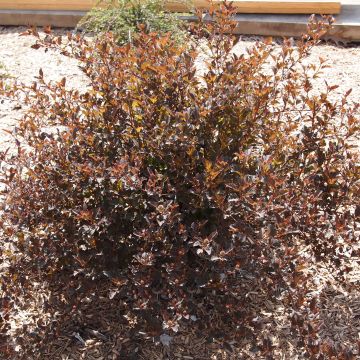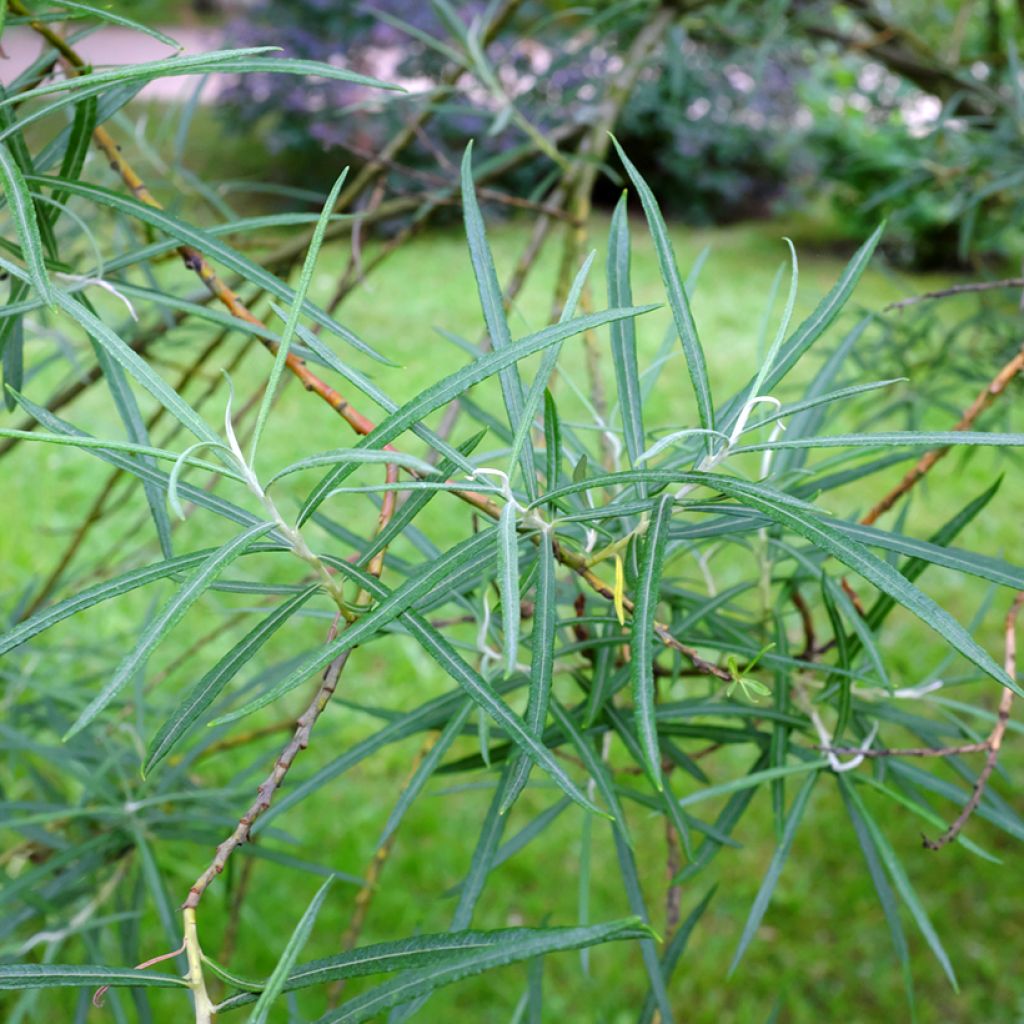

Salix elaeagnos Angustifolia - Saule à feuilles d'argousier
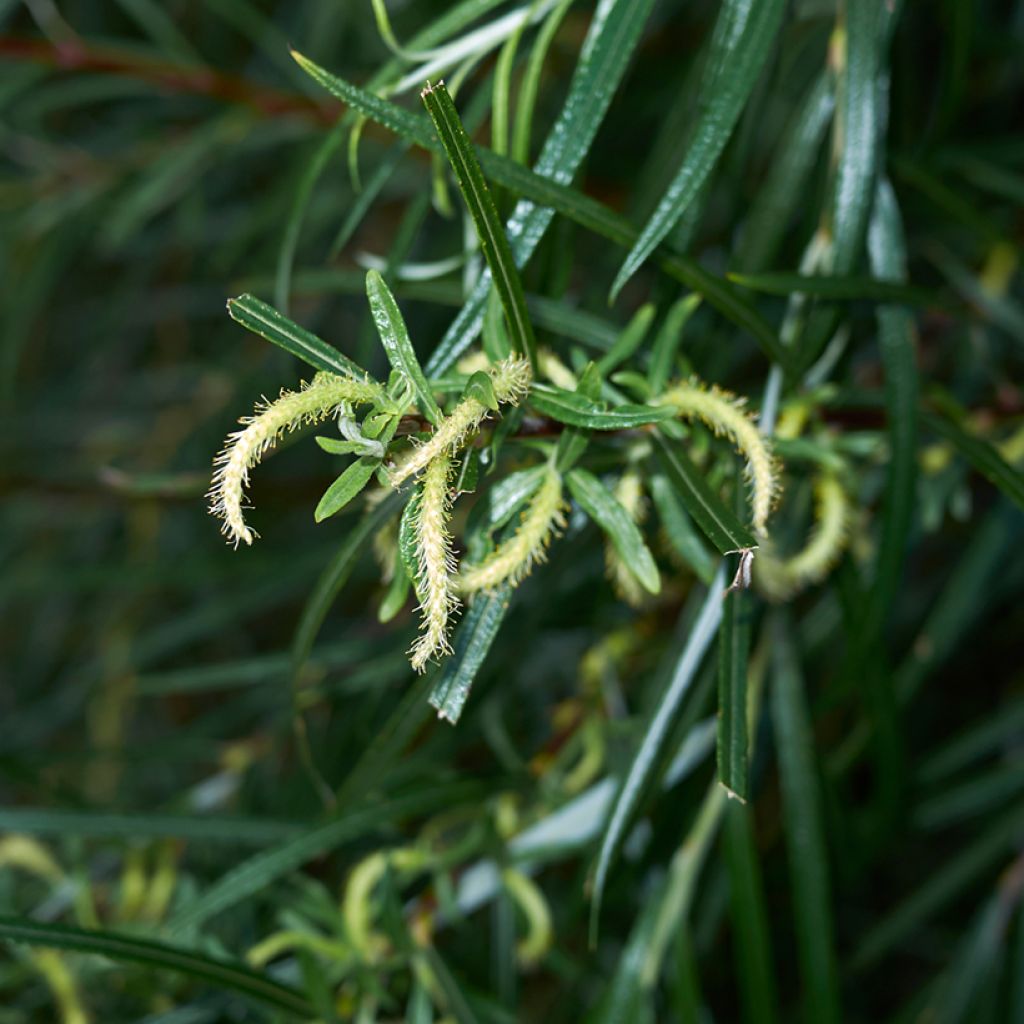

Salix elaeagnos Angustifolia - Saule à feuilles d'argousier
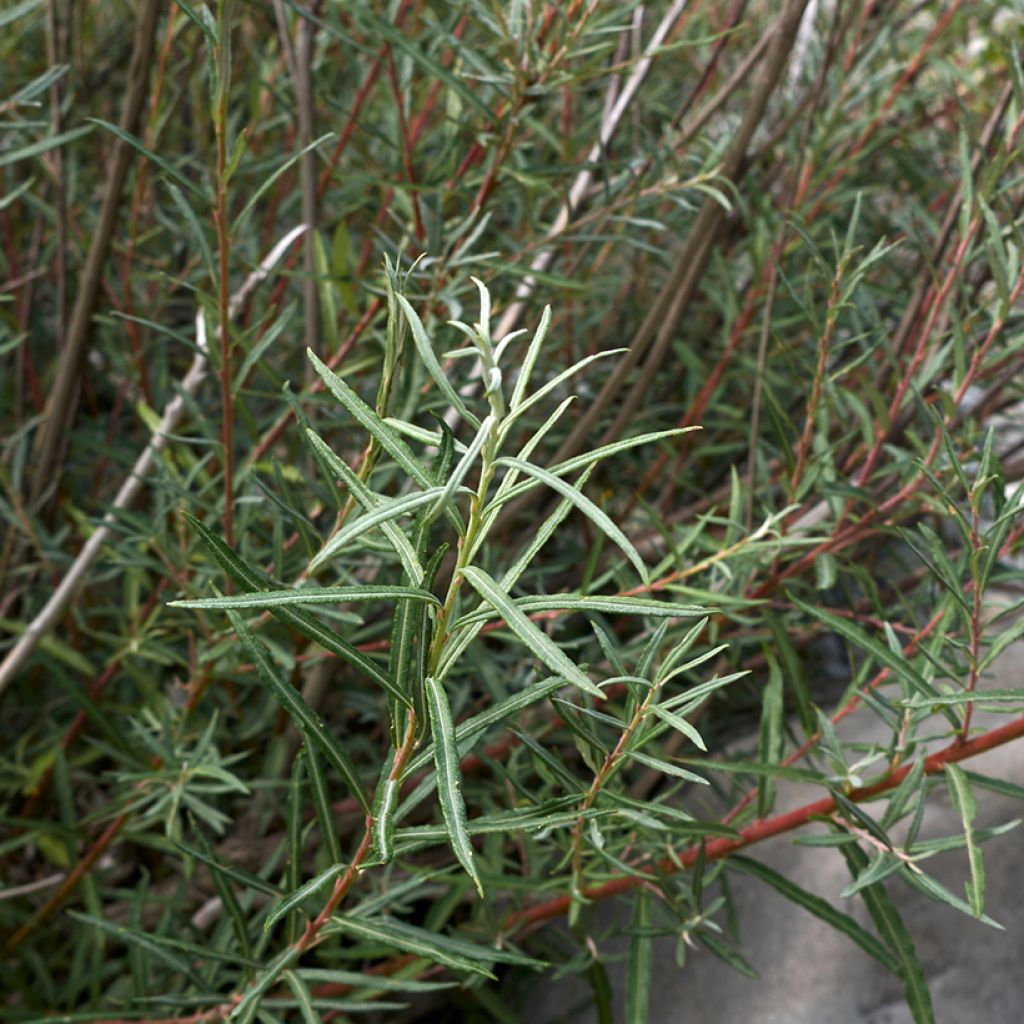

Salix elaeagnos Angustifolia - Saule à feuilles d'argousier
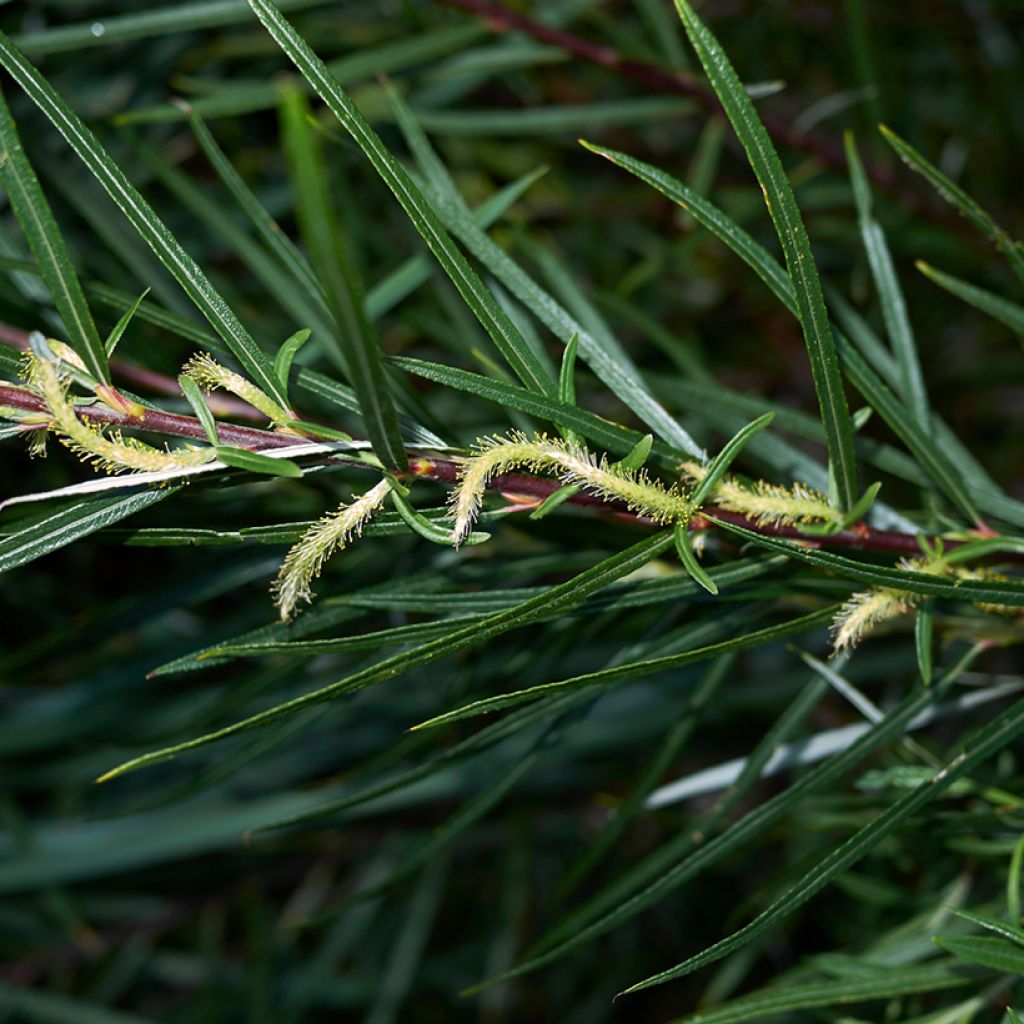

Salix elaeagnos Angustifolia - Saule à feuilles d'argousier
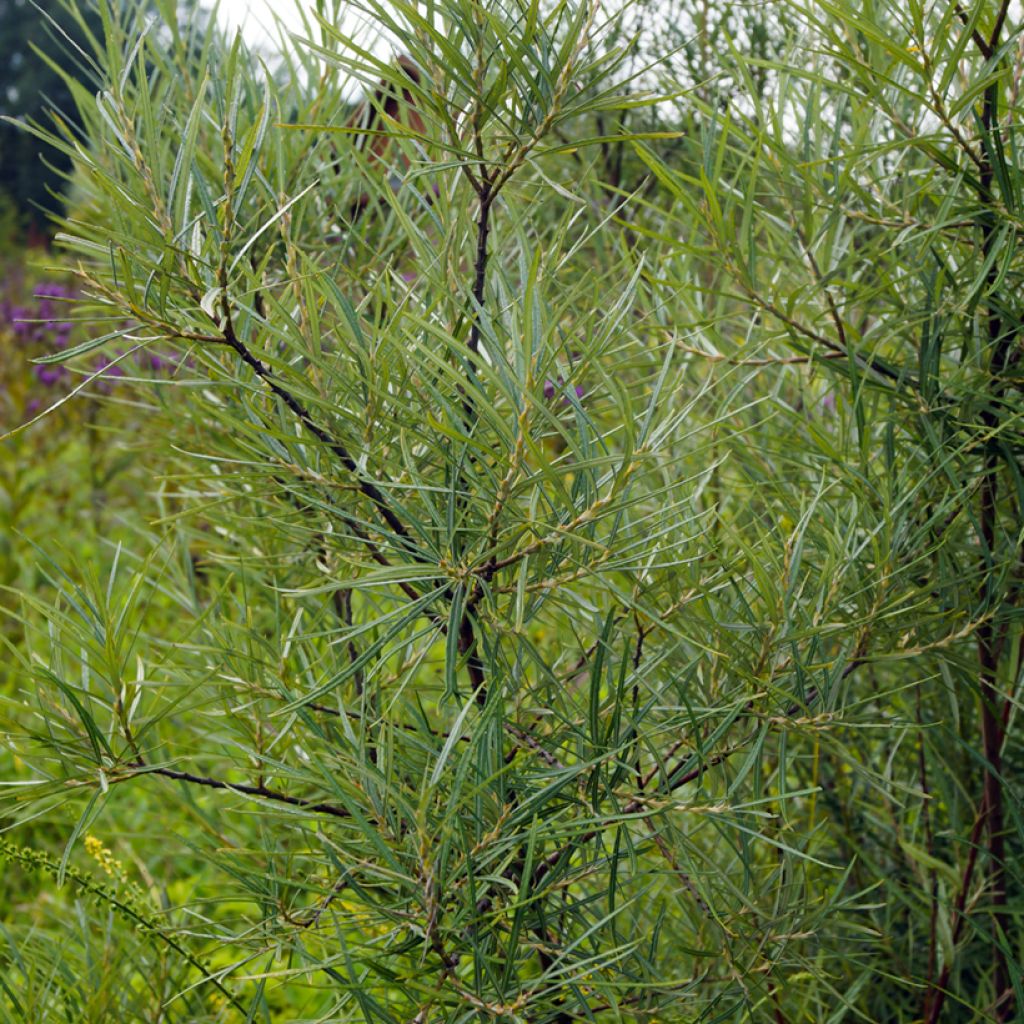

Salix elaeagnos Angustifolia - Saule à feuilles d'argousier
Salix elaeagnos subsp. angustifolia
Salix elaeagnos Angustifolia
Rosemary Willow, Hoary Willow, Narrow-leaved Willow
I am very disappointed. I received a completely dried up young plant. Since receiving it, I have put the roots in water but no bud is sprouting. What about the guarantee for recovery?
Michèle, 18/04/2024
Special offer!
Receive a €20 voucher for any order over €90 (excluding delivery costs, credit notes, and plastic-free options)!
1- Add your favorite plants to your cart.
2- Once you have reached €90, confirm your order (you can even choose the delivery date!).
3- As soon as your order is shipped, you will receive an email containing your voucher code, valid for 3 months (90 days).
Your voucher is unique and can only be used once, for any order with a minimum value of €20, excluding delivery costs.
Can be combined with other current offers, non-divisible and non-refundable.
Home or relay delivery (depending on size and destination)
Schedule delivery date,
and select date in basket
This plant carries a 24 months recovery warranty
More information
We guarantee the quality of our plants for a full growing cycle, and will replace at our expense any plant that fails to recover under normal climatic and planting conditions.
Does this plant fit my garden?
Set up your Plantfit profile →
Description
Salix elaeagnos 'Angustifolia', known as the narrow-leaved willow, is one of the most robust willows, as it can adapt to waterlogged riverbanks as well as dry rocky slopes in summer. It is also one of the most beautiful shrubs with grey foliage. Despite its wide and dense habit, it gives a great impression of lightness. Its early flowering of small yellow catkins occurs before the leaves appear, and in winter its fine branches tinged with red are revealed. Like all willows, it tolerates pruning very well. With so many qualities, this willow is perfect for creating an informal or trimmed hedge.
Salix elaeagnos 'Angustifolia' belongs to the Salicaceae family. It is a form with particularly narrow leaves, naturally found in the southern Alps, up to an altitude of 1700 m (5577ft). It is a pioneer species of gravelly riverbanks, also found in thickets or dry pine forests, and gravel pits or quarries. It prefers alluvial soils, rich in coarse materials, slightly acidic to slightly alkaline, with seasonal variations in moisture: its highly adaptable root system adjusts to soil humidity and texture. The plant adapts its growth and habit to its living conditions. The narrow-leaved willow has a round, dense and bushy habit, supported by thin, flexible and divided branches. It grows rapidly and reaches an average size of 2 m (7ft) in all directions at maturity (sometimes up to 4 m (13ft) depending on the growing conditions). The young branches are orange-red and the deciduous foliage is composed of narrow linear leaves that do not exceed 1 cm (1in) in width and are 2 to 12 cm (1 to 5in) long. The upper side is green-grey in spring, turning dark green, whiter and silvery on the underside, turning yellow in autumn before falling. Flowering occurs from March to May, before the leaves appear, on separate male and female subjects. The yellow male flowers consist of 2 fused and smooth stamens, while the greener female flowers have a short style terminated by 2 stigmas. This flowering provides a source of pollen and nectar for bees.
This intrepid willow, which forms a light, undulating and silvery mass, finds a place along bodies of water, and dry slopes, provided that the soil is deep and retains some moisture. It can also be used in rock gardens or for creating low-maintenance countryside hedges in a somewhat wild area of the garden. Regularly prune it after flowering to encourage it to branch out and produce numerous flowering branches. It can be associated with dogwoods (Cornus sanguinea, Cornus sericea), miscanthus, gorse or reedmace along a large pond. In a hedge, the silver of its foliage will complement the purples of Berberis, Black Lace Elder, or Royal Purple Smoke Bush.
There is such a diversity of forms, sizes, and cultivation requirements among willows that it is impossible not to find one that will thrive in your garden. These shrubs and trees are generally easy to grow if their basic requirements are met. In the garden, a willow always brings a bucolic and natural touch, sometimes very original or romantic depending on the varieties.
Salix elaeagnos subsp. angustifolia in pictures
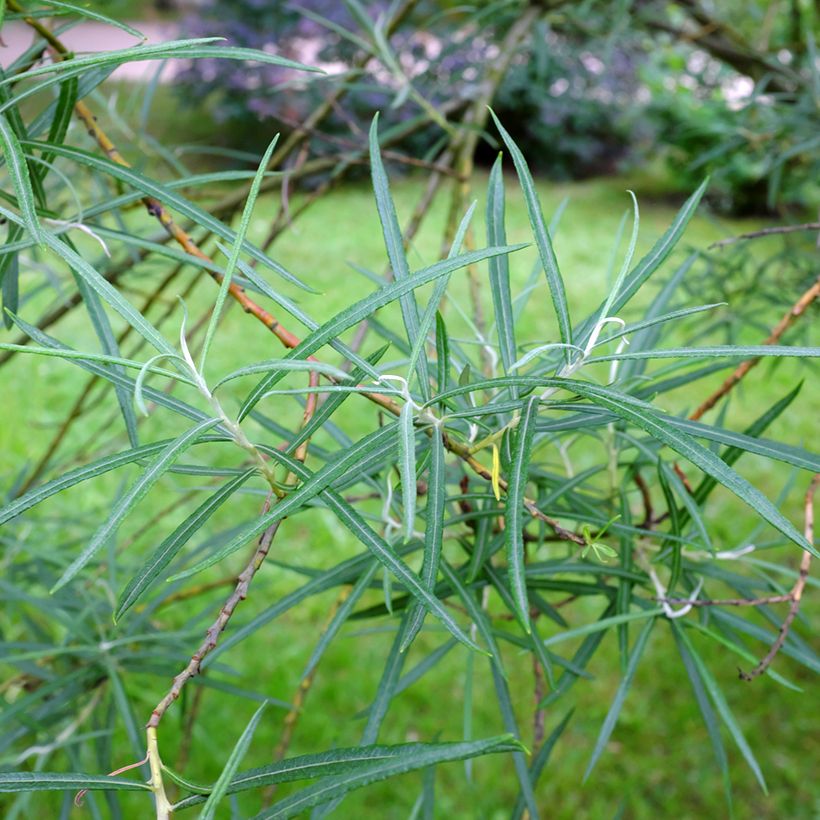

Plant habit
Flowering
Foliage
Botanical data
Salix
elaeagnos
Angustifolia
Salicaceae
Rosemary Willow, Hoary Willow, Narrow-leaved Willow
Salix rosmarinifolia (Hort.)
Alps
Other Willow - Salix
View all →Planting and care
Plant Salix elaeagnos 'Angustifolia' in autumn, in a very sunny position, partially shaded is possible in a warm climate. The narrow-leaved willow requires fairly deep soil, preferably rich in gravel and silt, and tolerates the presence of limestone. It prefers temporarily moist soils. However, it can also adapt to much drier soils in summer, as long as it retains some moisture at depth. Its root system adapts to the soil's moisture, and the most important thing is to help it establish itself by watering it deeply when it is young. Ideally plant in a mixture composed of half clayey garden soil mixed with gravel and compost. It is resistant to heavy frosts. Pruning is not essential, but this bush tolerates it very well in March.
Diseases and pests of willows:
The leaves and branches are susceptible to various fungal diseases. Collect all the leaves in autumn, burn them, and treat with Bordeaux mixture. Many insects, such as aphids and caterpillars, devour the foliage.
Planting period
Intended location
Care
Planting & care advice
-
, onOrder confirmed
Reply from on Promesse de fleurs
Similar products
Haven't found what you were looking for?
Hardiness is the lowest winter temperature a plant can endure without suffering serious damage or even dying. However, hardiness is affected by location (a sheltered area, such as a patio), protection (winter cover) and soil type (hardiness is improved by well-drained soil).

Photo Sharing Terms & Conditions
In order to encourage gardeners to interact and share their experiences, Promesse de fleurs offers various media enabling content to be uploaded onto its Site - in particular via the ‘Photo sharing’ module.
The User agrees to refrain from:
- Posting any content that is illegal, prejudicial, insulting, racist, inciteful to hatred, revisionist, contrary to public decency, that infringes on privacy or on the privacy rights of third parties, in particular the publicity rights of persons and goods, intellectual property rights, or the right to privacy.
- Submitting content on behalf of a third party;
- Impersonate the identity of a third party and/or publish any personal information about a third party;
In general, the User undertakes to refrain from any unethical behaviour.
All Content (in particular text, comments, files, images, photos, videos, creative works, etc.), which may be subject to property or intellectual property rights, image or other private rights, shall remain the property of the User, subject to the limited rights granted by the terms of the licence granted by Promesse de fleurs as stated below. Users are at liberty to publish or not to publish such Content on the Site, notably via the ‘Photo Sharing’ facility, and accept that this Content shall be made public and freely accessible, notably on the Internet.
Users further acknowledge, undertake to have ,and guarantee that they hold all necessary rights and permissions to publish such material on the Site, in particular with regard to the legislation in force pertaining to any privacy, property, intellectual property, image, or contractual rights, or rights of any other nature. By publishing such Content on the Site, Users acknowledge accepting full liability as publishers of the Content within the meaning of the law, and grant Promesse de fleurs, free of charge, an inclusive, worldwide licence for the said Content for the entire duration of its publication, including all reproduction, representation, up/downloading, displaying, performing, transmission, and storage rights.
Users also grant permission for their name to be linked to the Content and accept that this link may not always be made available.
By engaging in posting material, Users consent to their Content becoming automatically accessible on the Internet, in particular on other sites and/or blogs and/or web pages of the Promesse de fleurs site, including in particular social pages and the Promesse de fleurs catalogue.
Users may secure the removal of entrusted content free of charge by issuing a simple request via our contact form.
The flowering period indicated on our website applies to countries and regions located in USDA zone 8 (France, the United Kingdom, Ireland, the Netherlands, etc.)
It will vary according to where you live:
- In zones 9 to 10 (Italy, Spain, Greece, etc.), flowering will occur about 2 to 4 weeks earlier.
- In zones 6 to 7 (Germany, Poland, Slovenia, and lower mountainous regions), flowering will be delayed by 2 to 3 weeks.
- In zone 5 (Central Europe, Scandinavia), blooming will be delayed by 3 to 5 weeks.
In temperate climates, pruning of spring-flowering shrubs (forsythia, spireas, etc.) should be done just after flowering.
Pruning of summer-flowering shrubs (Indian Lilac, Perovskia, etc.) can be done in winter or spring.
In cold regions as well as with frost-sensitive plants, avoid pruning too early when severe frosts may still occur.
The planting period indicated on our website applies to countries and regions located in USDA zone 8 (France, United Kingdom, Ireland, Netherlands).
It will vary according to where you live:
- In Mediterranean zones (Marseille, Madrid, Milan, etc.), autumn and winter are the best planting periods.
- In continental zones (Strasbourg, Munich, Vienna, etc.), delay planting by 2 to 3 weeks in spring and bring it forward by 2 to 4 weeks in autumn.
- In mountainous regions (the Alps, Pyrenees, Carpathians, etc.), it is best to plant in late spring (May-June) or late summer (August-September).
The harvesting period indicated on our website applies to countries and regions in USDA zone 8 (France, England, Ireland, the Netherlands).
In colder areas (Scandinavia, Poland, Austria...) fruit and vegetable harvests are likely to be delayed by 3-4 weeks.
In warmer areas (Italy, Spain, Greece, etc.), harvesting will probably take place earlier, depending on weather conditions.
The sowing periods indicated on our website apply to countries and regions within USDA Zone 8 (France, UK, Ireland, Netherlands).
In colder areas (Scandinavia, Poland, Austria...), delay any outdoor sowing by 3-4 weeks, or sow under glass.
In warmer climes (Italy, Spain, Greece, etc.), bring outdoor sowing forward by a few weeks.






























